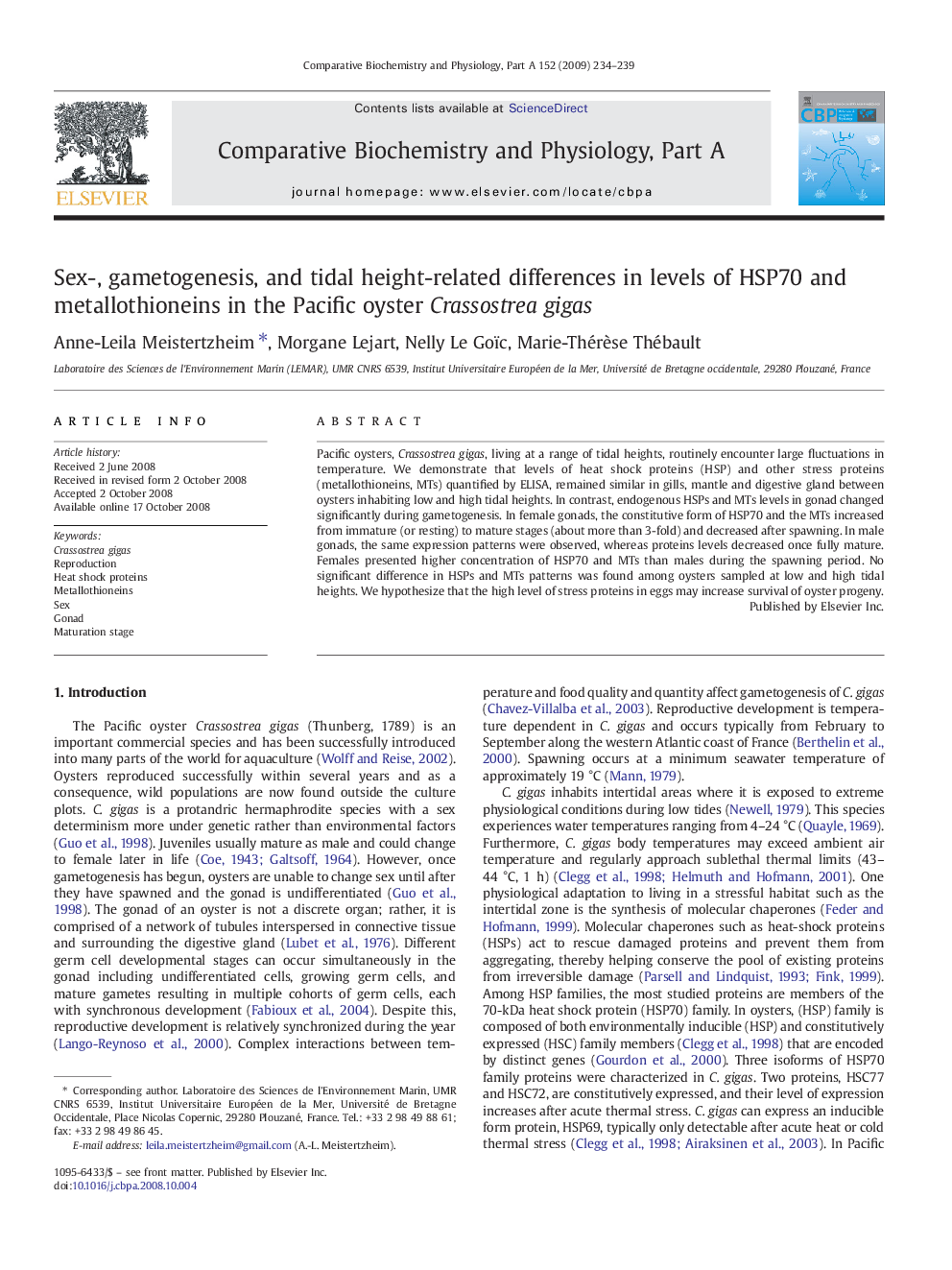| Article ID | Journal | Published Year | Pages | File Type |
|---|---|---|---|---|
| 1973666 | Comparative Biochemistry and Physiology Part A: Molecular & Integrative Physiology | 2009 | 6 Pages |
Pacific oysters, Crassostrea gigas, living at a range of tidal heights, routinely encounter large fluctuations in temperature. We demonstrate that levels of heat shock proteins (HSP) and other stress proteins (metallothioneins, MTs) quantified by ELISA, remained similar in gills, mantle and digestive gland between oysters inhabiting low and high tidal heights. In contrast, endogenous HSPs and MTs levels in gonad changed significantly during gametogenesis. In female gonads, the constitutive form of HSP70 and the MTs increased from immature (or resting) to mature stages (about more than 3-fold) and decreased after spawning. In male gonads, the same expression patterns were observed, whereas proteins levels decreased once fully mature. Females presented higher concentration of HSP70 and MTs than males during the spawning period. No significant difference in HSPs and MTs patterns was found among oysters sampled at low and high tidal heights. We hypothesize that the high level of stress proteins in eggs may increase survival of oyster progeny.
